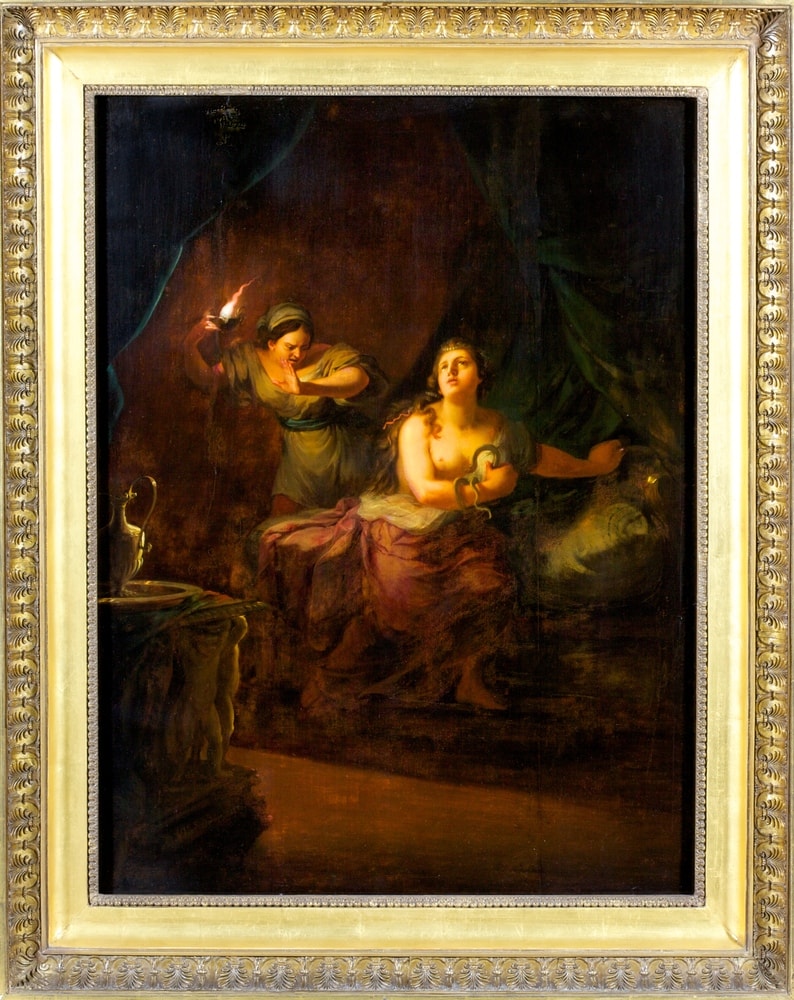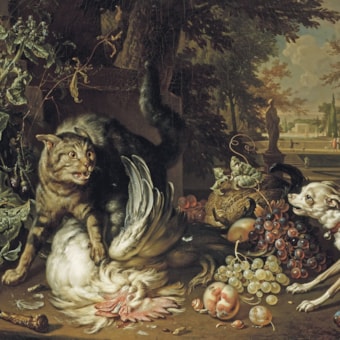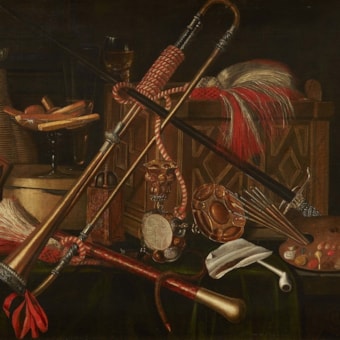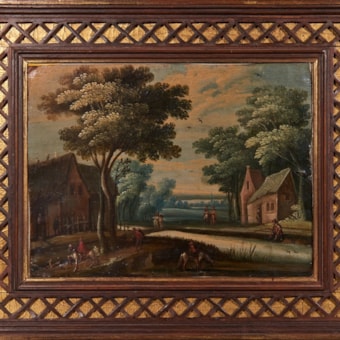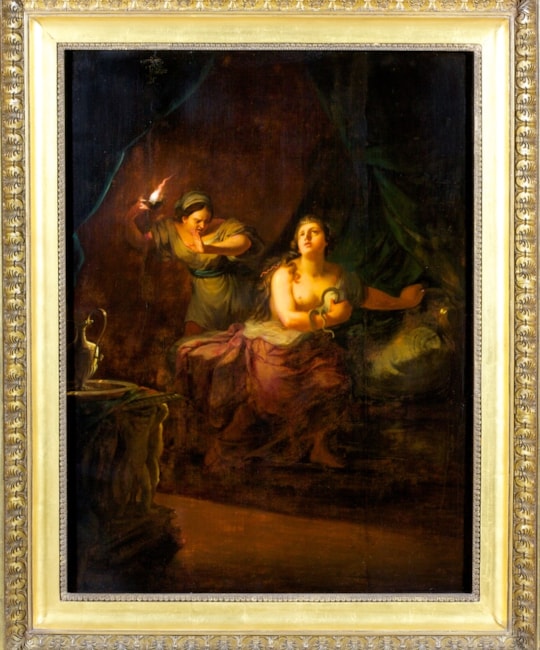Ref: 1333
The Death of Cleopatra
Ref: 1333
The Death of Cleopatra
1777
77.5 x 57 cm (30¹/₂ x 22¹/₂ inches)
Signed and dated on the left: Joh. Jac. Dorner 1777
77.5 x 57 cm (30¹/₂ x 22¹/₂ inches)
Signed and dated on the left: Joh. Jac. Dorner 1777
Exhibition:
His paintings are in the museums of Augsburg, Munich, Schleissheim, in the churches of Waldkirchen, Altötting, and elsewhere; many are in private collections. Among them are the seven genre paintings in Schleissheim.
Description:
Oil on panel
Johann Jakob Dorner, the Elder, was a painter and etcher. He first received art instruction in Freiburg from Franz Joseph Rösch, and from 1759 onward in Augsburg from Ignaz Bauer, with whom he primarily practiced fresco painting, which was popular in southern Germany at the time. He then traveled to northern Italy with his brother, the sculptor Joseph Dorner, and in the same year, 1759, decorated the Church of the Knights of the Cross at Westerheim in Württemberg with frescoes. Later moving to Munich, he was appointed court painter in 1762, provisionally in 1765, and after a trip via Düsseldorf to the Netherlands (1766–68 or 69), he was permanently appointed gallery inspector, on the condition that he deliver four cabinet pieces annually in the style of Dorner and other Dutch masters. It was only Elector Karl Theodor who released him from this condition upon his accession to the throne in 1777, when he appointed him a full Court Chamberlain and subsequently, after the establishment of the gallery in the Hofgarten under Weizenfeld's directorship, Vice Director. Thus, he was destined to participate in the establishment of this gallery, while at the same time exercising his most productive activity as a teacher. He pursued copying studies with particular zeal, and Dorner, with his insightful appreciation of the value of the older masters, was able to grasp not only form and color but above all the spiritual aspect. In 1788, he also organized the first public art exhibition in Munich from the work of his students; the exhibition included 65 drawings and 79 oil paintings. Dorner himself exhibited his first altarpiece, painted for the parish church of Waldkirchen in Upper Palatinate, the Farewell of the Apostles Peter and Paul. Since Max Joseph's accession to the throne in 1799, Dorner's name and official activities have increasingly faded into the background alongside those of Mannlich and Dillis.
Oil on panel
Johann Jakob Dorner, the Elder, was a painter and etcher. He first received art instruction in Freiburg from Franz Joseph Rösch, and from 1759 onward in Augsburg from Ignaz Bauer, with whom he primarily practiced fresco painting, which was popular in southern Germany at the time. He then traveled to northern Italy with his brother, the sculptor Joseph Dorner, and in the same year, 1759, decorated the Church of the Knights of the Cross at Westerheim in Württemberg with frescoes. Later moving to Munich, he was appointed court painter in 1762, provisionally in 1765, and after a trip via Düsseldorf to the Netherlands (1766–68 or 69), he was permanently appointed gallery inspector, on the condition that he deliver four cabinet pieces annually in the style of Dorner and other Dutch masters. It was only Elector Karl Theodor who released him from this condition upon his accession to the throne in 1777, when he appointed him a full Court Chamberlain and subsequently, after the establishment of the gallery in the Hofgarten under Weizenfeld's directorship, Vice Director. Thus, he was destined to participate in the establishment of this gallery, while at the same time exercising his most productive activity as a teacher. He pursued copying studies with particular zeal, and Dorner, with his insightful appreciation of the value of the older masters, was able to grasp not only form and color but above all the spiritual aspect. In 1788, he also organized the first public art exhibition in Munich from the work of his students; the exhibition included 65 drawings and 79 oil paintings. Dorner himself exhibited his first altarpiece, painted for the parish church of Waldkirchen in Upper Palatinate, the Farewell of the Apostles Peter and Paul. Since Max Joseph's accession to the throne in 1799, Dorner's name and official activities have increasingly faded into the background alongside those of Mannlich and Dillis.
you may also like

